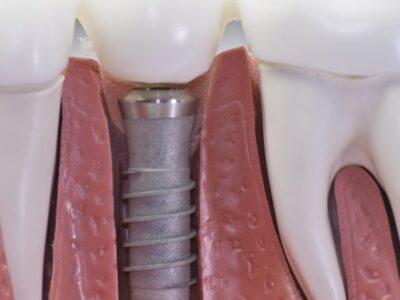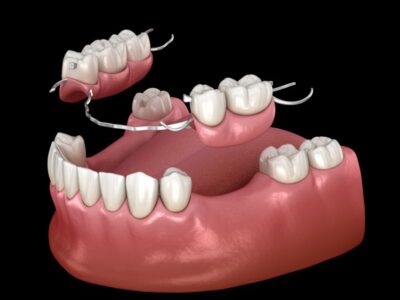
1. Understanding Mechanical Power Take Off (PTO) Systems
a) What is a PTO System and How Does it Work?
A mechanical Power Take Off (PTO) system is a method of transmitting power from an engine to another mechanical device. It is commonly used in vehicles, agricultural machinery, industrial equipment, and other applications that require the conversion of engine power into useful work. The PTO system connects to the engine’s crankshaft and transfers power through a driveshaft to the driven device.
The PTO system functions using a rotating shaft that provides power to the attached equipment. It is typically engaged and disengaged using a clutch mechanism. When engaged, the PTO shaft transfers power from the engine to the equipment, allowing it to perform its intended function. When disengaged, the PTO shaft stops rotating, disconnecting the power transmission.
b) Different Types of PTO Systems and Their Applications
There are several types of PTO systems available, each designed for specific applications:
- Transmission-Driven PTO: This type of PTO system connects directly to the transmission of a vehicle. It is commonly used in trucks and other vehicles that require the ability to power auxiliary equipment, such as hydraulic pumps or generators.
- Engine-Driven PTO: This PTO system is directly driven by the engine. It is commonly used in industrial applications where a continuous power source is required, such as powering industrial pumps or compressors.
- Side/Remote-Mounted PTO: This PTO system is mounted on the side or remote location of the engine. It is often used in applications where space is limited or the installation of a direct PTO system is not feasible.
- Split-Shaft PTO: This PTO system is designed to split the power between the vehicle’s transmission and the auxiliary equipment. It is commonly used in heavy-duty trucks that require multiple power take-offs.
The choice of PTO system depends on the specific application and the power requirements of the equipment it will be driving.
c) Advantages and Disadvantages of Using Mechanical PTO Systems
Using mechanical PTO systems offers several advantages:
- Versatility: Mechanical PTO systems can be used in various applications, providing power to a wide range of equipment.
- Cost-Effective: Compared to other power transmission methods, mechanical PTO systems are often more affordable and easier to maintain.
- Efficiency: Mechanical PTO systems have high power transmission efficiency, minimizing energy losses and maximizing the performance of the driven equipment.
However, there are also some disadvantages to consider:
- Limited Power Output: Mechanical PTO systems have a specific power limit, and exceeding this limit can result in damage to the system or the equipment being driven.
- Complexity: Installing and maintaining a mechanical PTO system can be complex, requiring skilled professionals and specialized knowledge.
- Wear and Tear: Continuous use of a mechanical PTO system can lead to wear and tear, requiring regular maintenance and potential replacement of components.
Before choosing a mechanical PTO system, it is essential to evaluate the pros and cons based on the specific requirements of the application.
2. Choosing the Right Mechanical PTO System
a) Factors to Consider When Selecting a PTO System for Your Application
Selecting the right mechanical PTO system for your application involves considering several factors:
- Power Requirements: Determine the power output needed to drive the equipment effectively. This includes considering the torque and rotational speed requirements of the equipment.
- Mounting Space: Evaluate the available space for installing the PTO system and ensure it can be properly integrated with the engine or transmission.
- Compatibility: Ensure the PTO system is compatible with the engine and equipment it will be connected to. Consider factors such as input/output shaft size, speed ratios, and mounting configurations.
- Safety Features: Look for PTO systems that have built-in safety features such as overload protection, emergency shut-off mechanisms, and guards to prevent accidental contact.
- Durability and Reliability: Consider the reputation of the manufacturer and the quality of the components used in the PTO system. A reliable and durable PTO system will minimize downtime and maintenance costs.
By carefully evaluating these factors, you can select the most suitable mechanical PTO system for your specific application.
b) Understanding Power Ratings and Compatibility with Your Equipment
Power ratings play a crucial role in selecting a compatible mechanical PTO system. The power output of the PTO system must match or exceed the power requirements of the driven equipment. It is essential to consider both torque and rotational speed when determining power compatibility.
When selecting a mechanical PTO system, ensure that the input and output shaft sizes and types are compatible with the equipment and the power transmission requirements. Consider the speed ratios and gear configurations to ensure efficient power transfer.
c) Key Features to Look for in a Reliable Mechanical PTO System
When choosing a mechanical PTO system, consider the following key features:
- Easy Installation: Look for PTO systems that come with clear installation instructions and the necessary mounting hardware, making the installation process more straightforward.
- Smooth Engagement and Disengagement: A reliable PTO system should provide smooth and precise engagement and disengagement, minimizing wear on the system and the driven equipment.
- Maintenance and Serviceability: Choose a PTO system that is designed for easy maintenance and serviceability. Components such as clutches and bearings should be easily accessible for inspection and replacement.
- Sealing and Protection: Ensure the PTO system has adequate sealing and protection against contaminants and moisture, increasing its durability and longevity.
- Warranty and Support: Consider PTO systems that come with a comprehensive warranty and reliable customer support to address any issues or concerns.
By considering these key features, you can select a reliable and user-friendly mechanical PTO system that will meet your needs and provide long-term performance.
3. Installation and Maintenance of Mechanical PTO Systems
a) Step-by-Step Guide to Installing a Mechanical PTO System
Installing a mechanical PTO system requires careful attention to detail and following specific steps:
- 1. Identify a suitable mounting location on the engine or transmission, ensuring there is enough space and clearance for the PTO system.
- 2. Clean the mounting surface thoroughly to remove any dirt, grease, or debris that could affect the installation or cause damage to the PTO system.
- 3. Position the PTO system onto the mounting surface, aligning the input and output shafts with the engine or transmission.
- 4. Secure the PTO system in place using the provided mounting hardware, following the manufacturer’s instructions for torque specifications.
- 5. Connect the PTO system to the engine or transmission using the appropriate driveline components, ensuring proper alignment and engagement.
- 6. Test the PTO system for proper operation, including engagement and disengagement, before putting it into regular use.
It is recommended to consult the manufacturer’s installation guide or seek professional assistance to ensure the proper installation of the mechanical PTO system.
b) Common Issues and Troubleshooting Tips for Mechanical PTO Systems
Despite their reliability, mechanical PTO systems may encounter issues that require troubleshooting. Some common problems include:
- Slipping Clutch: If the PTO system’s clutch slips during operation, it may be due to improper adjustments or worn-out clutch components. Adjust the clutch according to the manufacturer’s specifications or replace worn parts.
- Excessive Noise or Vibrations: Excessive noise or vibrations can indicate misalignment, worn-out bearings, or damaged components. Inspect the PTO system for any signs of damage, and realign or replace components as necessary.
- Overheating: Overheating of the PTO system can be caused by insufficient lubrication, excessive loads, or a malfunctioning cooling system. Check for proper lubrication and cooling, and reduce the load if necessary.
When troubleshooting a mechanical PTO system, refer to the manufacturer’s troubleshooting guide or seek assistance from a qualified technician to ensure safe and effective resolution of the issue.
c) Essential Maintenance Practices to Ensure Optimal Performance
Regular maintenance is crucial for ensuring the optimal performance and longevity of a mechanical PTO system. Some essential maintenance practices include:
- Lubrication: Proper lubrication of the PTO system’s moving parts is essential to reduce friction and wear. Follow the manufacturer’s recommendations for lubrication intervals and use the recommended lubricants.
- Inspection: Regularly inspect the PTO system for any signs of damage, wear, or misalignment. Replace worn or damaged components and realign if necessary.
- Cleaning: Keep the PTO system clean and free from dirt, debris, and contaminants. Regularly clean the system using non-corrosive cleaning agents and ensure it is properly sealed against moisture.
- System Testing: Periodically test the PTO system for proper engagement, disengagement, and overall performance. This can help identify any potential issues before they lead to extensive damage.
By following these maintenance practices, you can extend the life of your mechanical PTO system and minimize the risk of costly breakdowns.
4. Safety Considerations for Mechanical PTO Systems
a) Safety Precautions and Best Practices When Operating a PTO System
Operating a mechanical PTO system requires adherence to safety precautions and best practices to prevent accidents and injuries:
- Read the Manufacturer’s Manual: Familiarize yourself with the specific safety guidelines and instructions provided by the PTO system manufacturer.
- Use Personal Protective Equipment (PPE): Wear appropriate PPE, such as safety glasses, gloves, and protective clothing, when working near or operating the PTO system.
- Ensure Proper Mounting and Guarding: Ensure the PTO system is securely mounted and equipped with appropriate guards to prevent accidental contact with rotating components.
- Engage and Disengage Safely: Engage and disengage the PTO system only when the equipment is stationary and turned off to avoid sudden starts or stops that can cause injuries.
- Regular Inspections: Regularly inspect the PTO system for any signs of damage, wear, or malfunction. Address any issues promptly to prevent accidents.
Following these safety precautions and best practices can greatly reduce the risk of accidents and ensure safe operation of the mechanical PTO system.
b) Common Hazards and How to Mitigate Risks Associated with PTO Systems
PTO systems pose certain hazards that need to be mitigated to ensure safe operation:
- Entanglement Hazards: Rotating PTO shafts can pose a significant entanglement hazard. Implement proper guarding and ensure that loose clothing, jewelry, or other objects do not come into contact with the rotating components.
- Overload Hazards: Overloading the PTO system can lead to component failures and potential accidents. Follow the manufacturer’s guidelines for load limits and never exceed the recommended capacity.
- Maintenance Hazards: Performing maintenance or repairs on a PTO system can be dangerous if not done correctly. Always shut off the engine or equipment and lock out the power source before beginning any maintenance procedures.
By being aware of these hazards and implementing appropriate safety measures, such as adequate guarding, proper training, and adherence to safety guidelines, the risks associated with PTO systems can be effectively mitigated.
c) Compliance with Safety Standards and Regulations for PTO System Usage
Compliance with safety standards and regulations is essential for ensuring the safe and legal usage of mechanical PTO systems. Different industries and regions may have specific regulations in place regarding the installation, operation, and maintenance of PTO systems.
It is important to familiarize yourself with the relevant safety standards and regulations applicable to your industry or region. This may include adherence to guidelines from organizations such as the Occupational Safety and Health Administration (OSHA) or the European Machinery Directive (2006/42/EC).
By following these safety standards and regulations, you can ensure the safe and reliable operation of your mechanical PTO system while also preventing any legal or compliance issues.
FAQ
Question: What types of PTO systems are there? – There are different types of PTO systems including transmission-driven, engine-driven, side/remote-mounted, and split-shaft.
Question: What are the advantages of using mechanical PTO systems? – Mechanical PTO systems offer versatility, cost-effectiveness, and efficiency.
Question: What are the disadvantages of using mechanical PTO systems? – Mechanical PTO systems have limited power output, complexity in installation and maintenance, and can experience wear and tear.
Question: What factors should be considered when selecting a PTO system? – Factors to consider include power requirements, mounting space, compatibility, safety features, and durability.
Question: How can power ratings and compatibility be determined? – Power ratings and compatibility can be determined by matching the power output of the PTO system with the power requirements of the equipment, considering torque and rotational speed.
Question: What key features should be looked for in a reliable mechanical PTO system? – Key features include easy installation, smooth engagement and disengagement, maintenance and serviceability, sealing and protection, and warranty and support.
Question: What are the recommended steps for installing a mechanical PTO system? – The steps for installing a mechanical PTO system include identifying a suitable mounting location, cleaning the mounting surface, positioning and securing the system, connecting driveline components, and testing for proper operation.
Question: What are some common issues and troubleshooting tips for mechanical PTO systems? – Common issues include slipping clutch, excessive noise or vibrations, and overheating. Troubleshooting may involve adjusting the clutch, inspecting for damage or misalignment, and checking lubrication and cooling.
Question: What are some essential maintenance practices for mechanical PTO systems? – Essential maintenance practices include lubrication, inspection, cleaning, and system testing.
Question: What are some safety precautions and best practices for operating a PTO system? – Safety precautions include reading the manufacturer’s manual, using personal protective equipment (PPE), ensuring proper mounting and guarding, and engaging and disengaging safely.
Question: What are common hazards associated with PTO systems and how can the risks be mitigated? – Common hazards include entanglement, overload, and maintenance risks. Risks can be mitigated through proper guarding, following load limits, and implementing safe maintenance procedures.
Question: What are the safety standards and regulations for PTO system usage? – Compliance with safety standards and regulations, such as OSHA or the European Machinery Directive, is necessary for the safe and legal usage of mechanical PTO systems.
Useful Resources:
- https://www.ptomag.com/ – A magazine dedicated to Power Take Off (PTO) systems, offering articles, guides, and industry news.
- https://www.machinerylubrication.com/ – Provides information on lubrication best practices for mechanical systems, including PTO systems.
- https://www.osha.gov/ – The U.S. Occupational Safety and Health Administration website, offering safety guidelines and regulations for various industries.
- https://ec.europa.eu/growth/sectors/mechanical-engineering/machinery/guidance_en – Offers guidance on the European Machinery Directive for the safe use of mechanical equipment, including PTO systems.
- https://www.farmers.gov/ – An official U.S. government website that provides resources and information for farmers, including agricultural machinery and equipment.
- https://www.agriculture.com/ – Offers information and articles on agricultural machinery and equipment, including PTO systems.
- https://www.ehow.com/ – A website that provides tutorials and guides on a wide range of topics, including mechanical systems and equipment.
- https://www.industryweek.com/ – Industry Week provides news, articles, and resources related to various industries, including manufacturing and machinery.











